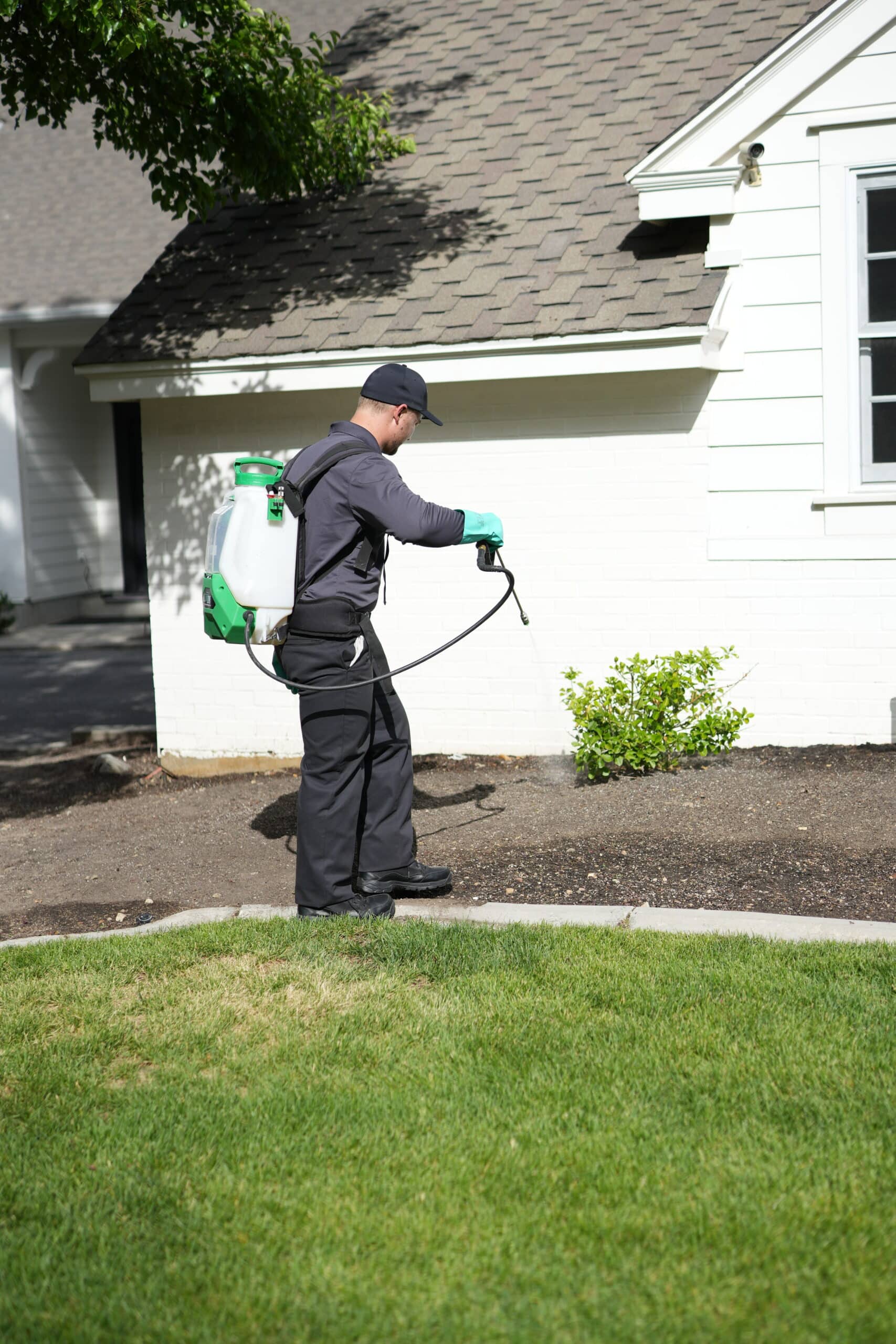What are Bald-Faced Hornets?
Hawx is always reliable. Always innovative.
Get $350 Off Bald-faced Service
20,000+ 5-STAR REVIEWS
“Connors Trader went the extra mile to make sure he listened to our needs regarding the ant problem we had.”
- Larry
“He sprayed indoors and out, swept my eaves for spider webs and took care of a couple of wasp nests.”
- Rick
“He even sprayed on my deck, which no one else has done.”
- Sue
What are Bald-Faced Hornets?
No hornet sighting—let alone an infestation—is ever good. They swarm around food, are unpleasant to look at, and worst of all, their sting is one of the most painful insect stings out there. But not all hornets are alike, and knowing exactly which type you’re up against is key to handling them safely.
Learn how to identify a bald-faced hornet quickly so you can call Hawx to rid your property of these nasty intruders.
Tired of your bald-faced hornet problem? Call Hawx Pest Control at (888) 372-9514 now and schedule an inspection of your commercial or residential property. Find your local Hawx Pest Control today!
What does a bald-faced hornet look like?
At first glance, a bald-faced hornet may look like a particularly large wasp, measuring about ½ to ¾ inch long. But unlike yellowjackets, it doesn’t have any yellow coloring; it is all black and white. Its most recognizable feature is its large black eyes and almost entirely white face—that’s where the name “bald-faced” comes from.

Bald-faced hornets aren’t actually hornets. They’re in the wasp family, and are a species of yellowjacket. stinging insects like yellowjackets, hornets, and wasps.
Where do bald-faced hornets make their nests?
Bald-faced hornets build enclosed, above-ground nests that resemble footballs or basketballs. They are unlike the nests of paper wasps, whose nests look more like upside-down umbrellas, or other yellow jackets, which prefer to nest underground.

Bald-faced hornets are strictly aerial nesters, constructing their homes above ground. Their large, gray, paper-like nests are often found hanging from trees and shrubs, but they can also turn up under building eaves, inside wall voids, or tucked away in other sheltered spots around your home. They may also nest in rock overhangs, on fences, and near human structures like sheds and utility poles.
Because these hornets live in social colonies that can swell to as many as 400 workers by late summer, it’s crucial to address a nest before it grows into a bigger problem.
Where can they be found in the US?
Bald-faced hornets can be found across the U.S. and in Canada, as well as Alaska, but they are most common in the eastern and southeastern United States and the western coast. They are absent from most arid, desert regions.
What do bald-faced hornets eat?
Bald-faced hornets, like all wasps and hornets, eat a combo diet. Adults feed on sweet substances, such as flower nectar, fruit, and plant juices, as well as hunt other insects like flies, caterpillars, and yellowjackets, chewing them into a pulp to feed their developing young.
If your dining al fresco lures over a bald-faced hornet and you suspect you may have a colony nearby, call Hawx immediately to address their presence around your home. One way to deter them from your patio or garage is to keep garbage closed up, clean up spills, rinse out your recyclables, and keep fruits and sweets in air-tight containers or in the refrigerator.
The bald-faced hornet sting: how much does it hurt compared to other stings?
Bald-faced hornet stings are described as very painful due to their venom. The sting is characterized by a rapid, intense pain that can last for several minutes, followed by itching and swelling that persists for up to 24 hours or longer, especially if there is a strong immune response.
In fact, a bald-faced hornet sting is more painful than a bee or paper wasp sting and is considered one of the more painful insect stings. It clocks in at a pain level 2 on the Schmidt Sting Pain Index, which Schmidt described as similar to “the debilitating pain of a migraine contained in the tip of your finger.”
And if the pain isn’t already bad enough, the worst part is that, unlike with bees, bald-faced hornets can sting multiple times because they have smooth stingers. They may attack in large numbers if their nest is disturbed, increasing your risk of multiple, painful stings. Additionally, they are capable of spraying venom from their stingers as a defensive mechanism, which can cause irritation and even temporary blindness if it gets in the eyes.
What to do if you think you have bald-faced hornets:
If you’ve noticed bald-faced hornets or their nest around your home, it’s best to contact a professional right away rather than attempt removal on your own. Even if they’re not bothering you, remember that the nest could be filled with dozens of hornets who could decide to invade your picnic or pose a danger to your children playing in the yard.
Avoid exposing yourself to their very painful stings and the health risks that come with them. Contact Hawx Pest Control today for a free estimate: our team comes fully equipped with the proper materials and protective gear to safely eliminate bald-faced hornets and help keep your home safe from these aggressive stingers.
Get $350 Off Bald-Faced Hornet Service
If you have a bald-faced hornet problem, Hawx Pest Control is here to help. Contact us today.

